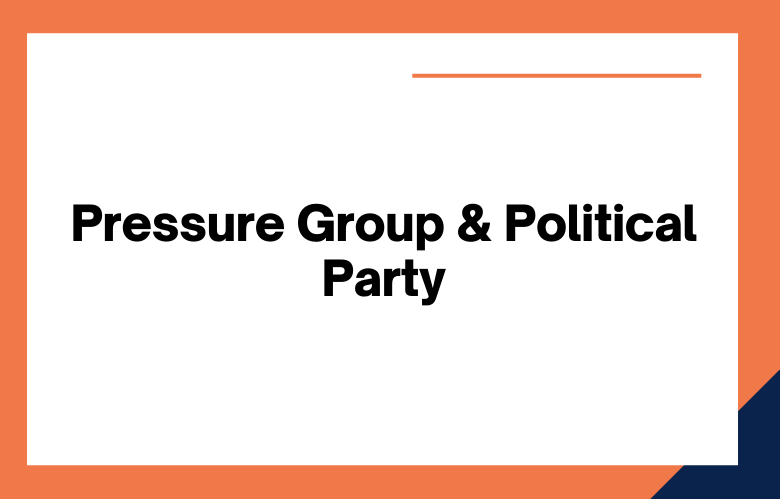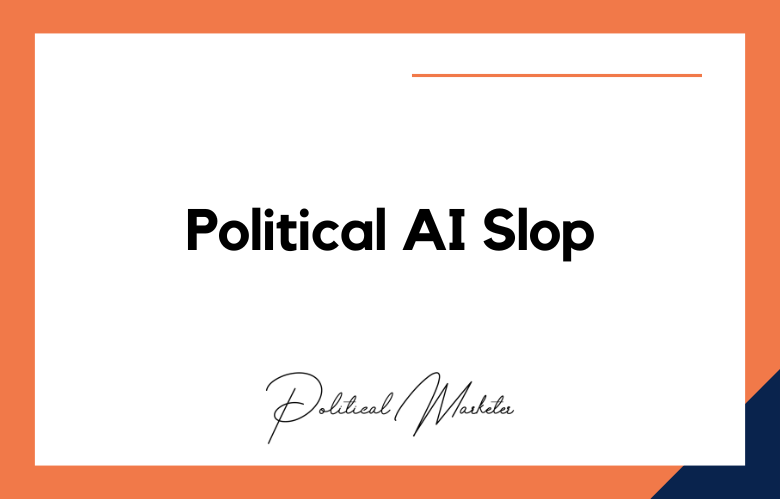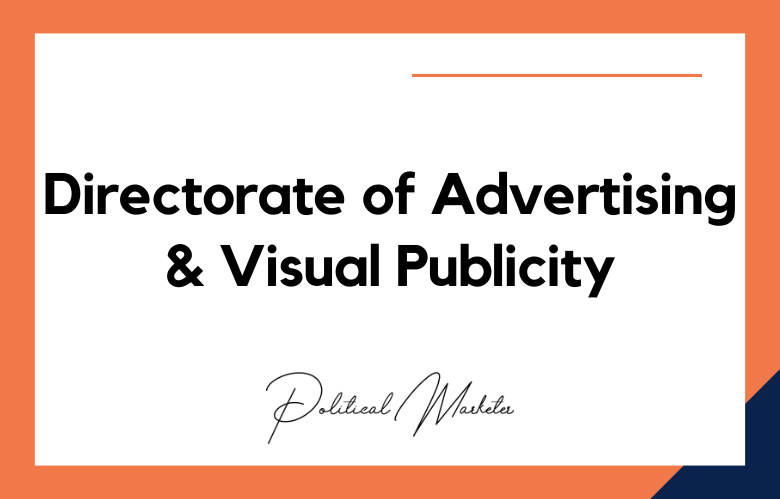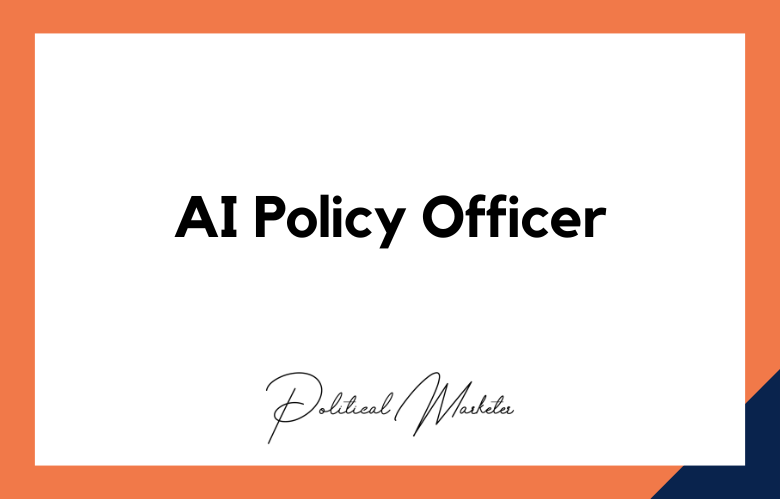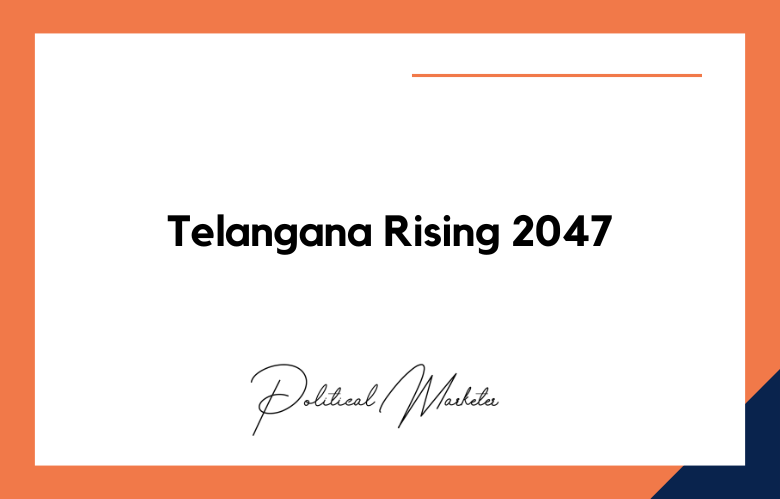Have you ever been excited to know the difference between a pressure group and a political party? We will explain the significant differences between these two types of organizations. We will also examine some advantages and disadvantages of pressure groups and political parties.
Both pressure groups and political parties are essential aspects of a functioning democracy, but they play different roles. Pressure groups are not affiliated with any particular party and exist to promote a specific issue or set of problems. On the other hand, political parties are affiliated with specific ideologies and compete for political power to implement their policies. This difference is critical to understanding why one type of organization might be more successful.
The history of pressure groups and political parties reveals how each evolved to fulfill distinct roles in shaping democracy. Pressure groups emerged as societies became more complex, and citizens recognized that their voices could influence policy outside formal electoral structures.
In the early stages of industrialization, trade unions were among the most visible pressure groups, mobilizing workers to demand fair wages, better working conditions, and social security. Later, the civil rights movements in the United States and elsewhere highlighted how advocacy groups could reshape laws and societal norms by exerting moral and political pressure.
The growth of environmental lobbies in the twentieth century, such as Greenpeace or India’s Chipko Movement, demonstrated how issue-based groups could bring urgent global challenges like deforestation and pollution into the mainstream policy agenda. These examples show that pressure groups often arise from grassroots mobilization around specific causes, aiming to influence those in power without directly seeking office.
In contrast, the development of political parties has its roots in the gradual transition from monarchies and aristocratic rule to representative democracy. In early parliamentary systems such as Britain, loose factions formed around royalists, landowners, and reformists.
Over time, these factions institutionalized themselves into organized parties competing for power. With the spread of universal suffrage in the nineteenth and twentieth centuries, political parties became indispensable, offering structured platforms, leadership, and electoral strategies to translate public will into governance.
Unlike pressure groups that push for particular issues, political parties evolved to aggregate diverse interests and present comprehensive programs for governing society.
In India, both pressure groups and political parties played defining roles during and after the freedom struggle. The Indian National Congress began as a pressure group in 1885, voicing demands for political reform under colonial rule, but gradually transformed into the leading political party that achieved independence.
Other groups such as trade unions, farmers’ associations, and caste organizations also shaped the nationalist agenda. After independence, India adopted a multi-party system under a democratic constitution, where national parties like the Congress and later the BJP competed with regional parties to form governments.
Simultaneously, NGOs, civil society movements, and issue-based lobbies emerged as powerful pressure groups influencing policies on land rights, women’s empowerment, environment, and transparency—examples include the Right to Information movement and the 2020–21 farmers’ protests.
Together, these milestones demonstrate that while political parties became central to capturing and exercising power, pressure groups remained vital in keeping governments accountable, amplifying marginalized voices, and ensuring that democracy remains responsive to diverse citizen concerns.
What is a Pressure Group?
A pressure group is an interest group that seeks to influence the government’s plan, especially in an area it controls. One example is when environmental groups lobby for more regulations on pollution.
A pressure group is a political organization that attempts to influence legislation or other political decisions by applying public pressure.
A Pressure Group is a group of people who try to influence the government to do something they want.
A pressure group is an advocacy organization whose goal is to influence politics. They use lobbying, media campaigns, and publishing reports to pressure political figures or legislative bodies.
A pressure group is a company or organization that attempts to exert political pressure on decision-makers.
A pressure group is an organization whose members publicly pressure a government through lobbying, protesting, or drawing attention to their cause in the media.
Pressure groups are organizations that aim to influence public opinion.
Types of Pressure Groups
Pressure groups come in different forms, each representing specific interests or causes within a democracy. Sectional or interest groups represent particular communities such as workers, farmers, or business associations, focusing on protecting their members’ rights and economic interests. Cause or promotional groups work around broader issues like environmental protection, women’s rights, or anti-corruption, aiming to influence policies for the larger public good. Institutional groups, such as bureaucratic associations or professional bodies, often use their position and expertise to lobby for favorable decisions. These variations highlight that while pressure groups do not seek political power directly, their methods—ranging from lobbying and petitions to protests and media campaigns—play a critical role in shaping government policy and public debate.
Sectional or Interest Groups
Sectional groups represent the specific interests of their members, usually based on occupation, profession, or economic position. Trade unions, for example, advocate for workers’ rights, wages, and working conditions, while business associations lobby for favorable policies such as tax benefits or reduced regulations. These groups focus on protecting the direct interests of their members rather than broader public concerns.
Cause or Promotional Groups
Unlike sectional groups, promotional groups campaign on issues that affect society at large. They include organizations working for environmental protection, human rights, gender equality, or anti-corruption reforms. Their goal is to influence government policies and raise awareness about causes that may not directly benefit their members but serve the broader public interest.
Institutional Groups
Institutional groups consist of organizations that already hold a formal position within the political or administrative system. Examples include associations of bureaucrats, the armed forces, or professional bodies like bar councils and medical associations. These groups use their influence and expertise to lobby for policies that reflect their priorities and perspectives.
Real-World Examples
Prominent examples illustrate how different types of pressure groups operate. Greenpeace functions as a global promotional group advocating for environmental reforms. The Federation of Indian Chambers of Commerce and Industry (FICCI) represents business interests, making it an influential sectional group. The All India Kisan Sabha (AIKS) is a farmers’ movement that lobbies for agricultural reforms, subsidies, and fair pricing policies. These cases show how pressure groups, though not competing for power directly, play an active role in shaping political outcomes and public debates.
What is a Political Party?
The only way to target your goals is to join a political party. The parties help you develop the most critical policies and connect you with like-minded individuals who can reach them.
Political parties are in-groups that influence the government by controlling specific parts. That is why they can be considered a political party’s job.
A political party is a community of people who work together to achieve the same goals. It’s also an organization that helps individuals get elected into office and promotes specific ideas or platforms.
Political parties are a group of people with similar political beliefs. They usually have a list of principles and candidates they support and positions on issues that aren’t clearly defined.
Political Parties are groups of people that want to rule a country or state.
A political party is a platform for people who believe in the same ideas and want to improve the place where they live. They come together to get power to implement their plans for improving the country.
A political party is an organization that represents the interests of a particular group, especially one seeking to form or gain control of a government.
Types of Political Parties
Political parties differ in their scope, ideology, and organizational base. National parties operate across the country with broad agendas, while regional parties focus on specific states or communities. Some are ideological parties, rooted in socialist, communist, or religious principles, while others act as catch-all parties, appealing to a wide spectrum of voters with broad promises. Parties can also be cadre-based, emphasizing strong organizational discipline, or mass-based, relying on popular movements and widespread participation. These variations show that political parties, unlike pressure groups, compete directly for power through elections and governance.
National and Regional Parties
National parties operate across multiple states and address issues of national importance. They typically contest elections in most parts of the country and shape broad policy agendas that influence governance at the central level. In India, the Bharatiya Janata Party (BJP) and the Indian National Congress (INC) are examples of national parties. Regional parties, by contrast, concentrate their activities within specific states or regions. Their focus often lies on local issues, cultural identity, or state-level development. Examples include the Dravida Munnetra Kazhagam (DMK) in Tamil Nadu and the Telangana Rashtra Samithi (now Bharat Rashtra Samithi) in Telangana.
Ideological Parties
Ideological parties are built around a distinct set of principles or beliefs. Communist and socialist parties emphasize economic equality and state intervention in markets, while Hindutva-based parties focus on cultural nationalism and religious identity. Such parties use their ideology to mobilize supporters, define policy positions, and maintain organizational unity. Their influence often extends beyond elections, shaping public debates and long-term policy directions.
Catch-All Parties
Catch-all parties appeal to a broad range of voters by focusing on inclusive agendas rather than narrow ideological lines. These parties adapt their policies to attract diverse social groups, aiming to secure wide electoral support. They often emphasize development, governance, and welfare rather than a rigid ideological framework. The Indian National Congress historically functioned as a catch-all party, while other parties have also adopted similar strategies to expand their voter base.
Cadre-Based and Mass-Based Parties
Cadre-based parties rely on a disciplined organizational structure with dedicated members who maintain strict loyalty and follow party directives. The Communist Party of India (Marxist) is an example of this model, where trained cadres work continuously at the grassroots level. Mass-based parties, on the other hand, depend on broad public participation and mobilization during elections. They thrive on large-scale rallies, charismatic leadership, and populist appeals to secure support. The Bahujan Samaj Party (BSP) and Samajwadi Party (SP) are examples where wide-scale public mobilization forms the foundation of political activity.
Methods of Influence
Pressure groups and political parties use different methods to shape decisions in a democracy. Pressure groups rely on lobbying, petitions, protests, media campaigns, and public demonstrations to persuade policymakers and raise awareness about their causes. Their influence is indirect, focused on pressuring those in power rather than holding office themselves. Political parties, in contrast, influence governance more directly by contesting elections, presenting manifestos, forming governments, and enacting policies once in power. These distinct methods show how pressure groups seek to influence from outside the system, while political parties operate within it to exercise authority.
Pressure Groups
Lobbying: Pressure groups often meet legislators, ministers, and bureaucrats to argue for specific policy changes. They present data, reports, or expert opinions to strengthen their case.
Petitions: Collecting public signatures and submitting petitions to government authorities is a common method. This demonstrates widespread support for an issue and increases political pressure.
Media Campaigns: Pressure groups use print, television, and digital platforms to spread their message. By shaping public opinion, they indirectly influence policymakers who remain sensitive to public sentiment.
Protests and Demonstrations: Street protests, marches, and rallies attract attention and show the intensity of public demand. These actions signal urgency and can force governments to respond.
Litigation: Some groups take legal action, filing public interest litigations or challenging policies in court. Judicial intervention often compels governments to revise or withdraw contested measures.
Political Parties
Manifestos: Political parties publish manifestos before elections, outlining their promises and proposed policies. These serve as a contract with the electorate and guide party actions once in power.
Election Campaigns: Parties organize rallies, advertisements, and grassroots mobilization to secure voter support. Campaigns are their most visible form of influence and a key route to political power.
Policy Formulation: After elections, parties in government design policies that reflect their ideology and campaign commitments. Opposition parties also influence policy by scrutinizing government decisions and proposing alternatives.
Legislative Action: Parties exercise direct influence through lawmaking. Members introduce bills, debate policies in parliament or state assemblies, and vote to enact or block legislation. Their authority in legislatures gives them a decisive role in shaping governance.
Advantages and Disadvantages
Pressure groups and political parties both contribute to democracy, but in different ways. Pressure groups give voice to specific causes, provide expert input, and hold governments accountable. However, they can represent narrow interests and sometimes rely on disruptive methods. Political parties create organized platforms, contest elections, and ensure accountability through governance. Yet, they may prioritize winning votes over long-term policies and often engage in partisanship or populism. These strengths and weaknesses highlight how both groups are necessary, but neither alone can fully safeguard democratic representation.
Pressure Groups
Advantages
Pressure groups represent minority or marginalized voices that may not find adequate space in mainstream political discourse. By doing so, they strengthen democratic participation beyond elections. They also bring expertise to policymaking.
Many groups employ professionals, researchers, or subject specialists who provide detailed evidence and analysis, enabling governments to make informed decisions.
Disadvantages
Pressure groups sometimes distort public priorities when dominated by wealthy donors, corporate lobbies, or elite interests. This imbalance can skew policies in favor of a few rather than the broader public. In some cases, their methods, such as disruptive protests or excessive lobbying, may create tension between legitimate advocacy and democratic order.
Political Parties
Advantages
Political parties provide stability by contesting elections, forming governments, and ensuring a continuous cycle of representation and accountability. They also create a structured platform where diverse social and economic interests can be aggregated into coherent policy agendas. Regular elections give citizens a way to evaluate performance and replace ineffective governments.
Disadvantages
Parties often prioritize short-term electoral gains over long-term national policies. This can result in populist measures that appeal to voters but strain public resources. They also tend to fall into partisanship, placing party interests above public good, which can reduce cooperation across political lines and weaken consensus-building in democratic systems.
Interaction Between the Two
Pressure groups and political parties often intersect in shaping democratic outcomes. Pressure groups influence parties by lobbying for the inclusion of their demands in manifestos, funding campaigns, or mobilizing public opinion on key issues. Political parties, in turn, rely on support from trade unions, business associations, community organizations, and social movements to strengthen their voter base. Sometimes pressure groups align closely with specific parties, while at other times they act independently, pressing all political actors to address their concerns. This interaction shows how issue-based advocacy and electoral politics continuously influence each other within a democracy.
Influence on Party Manifestos
Pressure groups often shape the agendas of political parties by lobbying for the inclusion of their demands in manifestos. Environmental groups may push parties to commit to sustainable development, while farmers’ associations can influence promises on subsidies, loan waivers, or procurement prices. By mobilizing public opinion around specific issues, pressure groups make it politically costly for parties to ignore their demands during election campaigns.
Party-Affiliated Organizations
Many political parties maintain close links with unions, student bodies, caste-based associations, or community groups. These organizations act as pressure groups but also serve as vote banks and mobilization tools during elections. For instance, student wings of major parties influence youth policies and create future political leaders, while caste or community-based organizations push parties to address identity-related concerns in governance.
Case Example: Trade Unions and Left Parties
Trade unions have historically influenced the labour policies of left-leaning political parties in India. By organizing strikes, protests, and negotiations, they pressured parties like the Communist Party of India (Marxist) to prioritize worker rights, wage protection, and social security in their platforms. This example demonstrates how sustained advocacy by pressure groups can shape the ideological direction and policy commitments of political parties.
Impact on Democracy
Pressure groups and political parties together shape how democracy functions. Pressure groups strengthen participation by giving citizens ways to influence policy beyond elections, ensuring that minority voices and issue-based concerns are heard. At the same time, their dominance by wealthy or elite interests can distort priorities. Political parties provide structured representation, organize governance, and maintain accountability through elections, but they can also encourage partisanship and short-term populism. The interaction of both ensures vibrancy in democratic life, yet also exposes tensions between inclusive representation and concentrated influence.
Role in Pluralism
Pressure groups and political parties both strengthen pluralism by ensuring that diverse voices find representation in a democracy. Political parties aggregate broad interests into structured programs, while pressure groups bring forward specific concerns such as environmental protection, gender equality, or workers’ rights. Together, they create multiple channels for citizen participation, preventing governance from becoming concentrated in the hands of a few actors.
Risks of Lobbying and Corporate Capture
While pressure groups enhance democratic participation, excessive lobbying or dominance by corporate interests can distort policy priorities. Wealthy groups with strong resources may secure disproportionate influence, leaving smaller or weaker groups with limited access. This imbalance risks undermining the fairness of democratic decision-making and may reduce public trust in institutions of governance if citizens perceive policymaking as biased toward elite interests.
Balance Between Competition and Checks
Competitive party politics ensures accountability by allowing voters to evaluate performance and change governments through elections. Pressure groups provide issue-based checks on these parties by monitoring their policies, mobilizing public opinion, and demanding corrective measures. This balance is essential: without parties, democracy would lack organized governance, and without pressure groups, it would risk ignoring specific issues and minority concerns. Both are therefore integral to maintaining a responsive and accountable democratic system.
Global Comparisons
The interaction between pressure groups and political parties varies across democracies. In the United States, lobbying and campaign finance create strong pressure group influence through mechanisms like Political Action Committees (PACs) and Super PACs. In the United Kingdom, trade unions, business associations, and advocacy groups often shape party policies, particularly within Labour and Conservative platforms. In India, regional parties coexist with powerful social movements and NGOs that influence policymaking without directly seeking power. Authoritarian systems, by contrast, often suppress pressure groups or restrict them to state-approved roles, reducing their ability to challenge ruling parties. These differences highlight how political culture, legal frameworks, and historical context shape the balance between issue-based advocacy and electoral competition.
United Kingdom and United States
In the United States, pressure groups play a strong role through lobbying and campaign finance. Political Action Committees (PACs) and Super PACs raise large sums of money to support candidates and influence elections. Corporate lobbies, advocacy groups, and unions also invest heavily in media campaigns and legislative lobbying, shaping policy outcomes in areas such as healthcare, taxation, and environmental regulation. The United Kingdom has a different structure but similar influence. Trade unions have historically shaped Labour Party policies, while business associations and advocacy groups influence the Conservative Party. Both countries show how pressure groups and political parties interact closely, with money and lobbying central to the process.
India
In India, the interaction between pressure groups and parties often takes the form of grassroots movements and issue-based advocacy. Non-governmental organizations (NGOs), farmer movements, and caste-based groups influence political agendas, particularly in regional contexts. For example, farmers’ associations such as the All India Kisan Sabha (AIKS) shape agricultural policy, while caste-based organizations press parties to adjust reservation policies or welfare schemes. Unlike the United States or United Kingdom, financial lobbying is less institutionalized, but mass mobilization and protest campaigns often achieve significant impact.
Authoritarian Systems
In authoritarian regimes, pressure groups rarely function independently. Governments either suppress them or allow only state-controlled organizations to exist. In such systems, political parties dominate the political sphere, and pressure groups are often co-opted into official structures, reducing their ability to challenge or influence policy. As a result, the balance between parties and advocacy groups that sustains pluralism in democracies is largely absent.
Legal and Constitutional Position
Political parties and pressure groups differ in their legal status within a democracy. Political parties are formally recognized under laws such as the Representation of the People Act, 1951, and are regulated by the Election Commission of India, which oversees their registration, funding, and conduct during elections. Pressure groups, in contrast, do not enjoy direct constitutional recognition as formal entities. They operate under the broader protections of Article 19, which guarantees freedom of speech, association, and peaceful assembly. This framework allows pressure groups to advocate for causes, organize protests, and influence policy without directly contesting elections, while political parties remain central to governance through their legal mandate to form governments.
Recognition of Political Parties
Political parties in India receive formal recognition under the Representation of the People Act, 1951. This legislation provides the legal framework for their registration, regulation, and participation in elections. Parties must adhere to specific requirements regarding membership, internal democracy, and financial transparency to remain recognized. This recognition grants them the authority to contest elections, nominate candidates, and secure a role in government formation.
Role of the Election Commission
The Election Commission of India regulates political parties to ensure free and fair elections. It oversees the registration of new parties, allocates election symbols, monitors compliance with election laws, and enforces codes of conduct during campaigns. By supervising these processes, the Commission acts as a safeguard against electoral malpractice and maintains the integrity of democratic competition.
Constitutional Status of Pressure Groups
Unlike political parties, pressure groups do not have direct constitutional recognition as formal entities. However, they operate under the rights guaranteed by Article 19 of the Constitution, which provides citizens the freedom of speech, peaceful assembly, and association. These protections allow groups to organize, protest, and lobby for causes without contesting elections. Their role, therefore, is not to form governments but to influence public policy and hold elected representatives accountable through advocacy and collective action.
Difference between Pressure Groups and Political Parties
- A pressure group is an organization seeking to change government policy. On the other hand, a political party is a formal organization whose primary goal is to win elections and get candidates into office.
- A pressure group is a voluntary organization that advocates for specific social issues. Pressure groups can range from charities to lobbying firms and public relations agencies. A political party is an organized group of people who support certain ideals or policies over others, which they may attempt.
- A PRESSURE GROUP is a group of citizens who change laws. For example, students could form a pressure group if they want more school funding.
- A political party is a platform of people who share the same social, economic, and political ideology. A pressure group is an organized body that influences government policy by applying direct or indirect pressures through lobbying, protests, etc.
- A pressure group is a voluntary association of persons who unite to achieve or promote common goals.
- A pressure group is entirely different from a political party because it consists of people trying to influence politics.
- A pressure group tries to influence legislation. A political party, on the other hand, takes part in governance.
- A pressure group is an organization formed to promote a cause. In comparison, political parties run for election and form governments.
- A difference between a pressure group and a political party is that a pressure group has no formal power, while a political party does.
- A pressure group is an organized collection of people or organizations that work together to influence public opinion, policy decisions, legislation, conduct investigations, etc.
- There is a significant difference between pressure groups and political parties. Pressure groups are generally focused on social problems and the role of government, whereas political parties tend to be concerned with the distribution of wealth, power, and resources within society.
- A pressure group is a group that has an organization achieve its goals by influencing policymakers and other decision-makers. Political parties have to compete in elections.
- Political parties and pressure groups have similarities, but they also have many differences. First, political parties are people who want to change government policy or rule. At the same time, pressure groups are not involved in making decisions on a national level.
- In a political system, many groups try to influence government decisions. A pressure group tries to make the government change policies or laws by applying public pressure. Pressure groups can be formal or informal, and most have few members.
- A pressure group is a particular interest organization that tries to influence politicians, decision-makers, and the public. On the other hand, a political party aims to get members elected into office to exercise political power through government.
- A pressure group is a simple, informal association of individuals or organizations influencing public opinion and policy. On the other hand, political parties are formal associations that nominate candidates for government elections in a democratic system.
Conclusion
Remembering this is not always the same as being well-informed or educated about an issue is essential.
For your voice to be heard and respected by those in power, you need more than just opinionated statements from yourself – you also need knowledge of how these systems work so that when you speak up, what you say has merit and can make a difference.
We offer political marketing consulting services for grassroots organizations to increase their impact with local, state, and national governments through targeted outreach campaigns designed around your needs. Let us know if we can help!
Pressure Groups vs Political Parties: Shocking Differences That Shape Democracy – FAQs
What Is a Pressure Group?
A pressure group is an organized association that seeks to influence public policy without contesting elections. It uses tools such as lobbying, petitions, media campaigns, protests, and litigation.
What Is a Political Party?
A political party is an organized group that contests elections to win power and implement its policy platform through governance.
How Do Pressure Groups Differ From Political Parties?
Pressure groups aim to influence those in power from outside the electoral arena, while parties seek power through elections and govern once elected.
Why Are Both Important in a Democracy?
Parties aggregate broad interests, form governments, and ensure accountability through elections. Pressure groups raise issue-specific concerns, add expertise, and hold governments to account between elections.
What Are Sectional or Interest Groups?
They represent specific constituencies such as workers, farmers, or business owners. Examples include trade unions and industry associations.
What Are Cause or Promotional Groups?
They campaign for issues that affect the wider public, such as environmental protection, human rights, and anti-corruption reforms.
What Are Institutional Groups?
They are organized bodies within existing systems, such as professional associations or service associations, that lobby using their expertise and position.
What Methods Do Pressure Groups Use to Influence Policy?
Common methods include lobbying officials, filing petitions, running media campaigns, organizing protests, and pursuing public interest litigation.
How Do Political Parties Influence Policy?
Parties publish manifestos, run election campaigns, form governments, design policies, and pass legislation in legislatures.
What Advantages Do Pressure Groups Offer?
They amplify minority and marginalized voices and supply specialized knowledge that can improve policy design.
What Are the Risks Associated With Pressure Groups?
Resource-rich groups can dominate agendas, skewing policy toward narrow interests. Aggressive tactics can also strain public order.
What Advantages Do Political Parties Offer?
They provide stable governance, integrate diverse interests into coherent programs, and enable voters to reward or remove leaders through elections.
What Are the Downsides of Political Parties?
They may prioritize short-term electoral gains, encourage partisanship, and adopt populist measures that burden public resources.
How Do Pressure Groups Shape Party Manifestos?
By lobbying and mobilizing public opinion, they push parties to adopt commitments on issues such as environmental standards, farm prices, or social welfare.
What Role Do Party-Affiliated Organizations Play?
Unions, student wings, and community groups mobilize voters, influence policy positions, and build future leadership pipelines for parties.
Can You Give Examples of Well-Known Pressure Groups?
Greenpeace advocates for environmental reforms, FICCI represents business interests, and AIKS advances farmer concerns.
How Has This Relationship Evolved Historically in India?
The Indian National Congress began as a reform-oriented association before becoming a mass party. Since independence, NGOs and social movements have continued to influence policy without seeking office.
What Is the Legal Status of Political Parties in India?
Parties are recognized and regulated under the Representation of the People Act, 1951, and overseen by the Election Commission of India.
What Is the Legal Status of Pressure Groups in India?
They are not formally recognized as parties, but citizens and associations operate under Article 19 rights to speech, association, and peaceful assembly.
How Do Global Contexts Change These Dynamics?
In the United States and the United Kingdom, lobbying and campaign finance create strong channels for pressure groups. In India, mass mobilization by NGOs and social movements is more prominent. Authoritarian systems often restrict or control pressure groups, limiting their influence.
One way to get in touch is by filling out our online form on this site or give us a call at
+91 9848321284. Let’s work together today!

